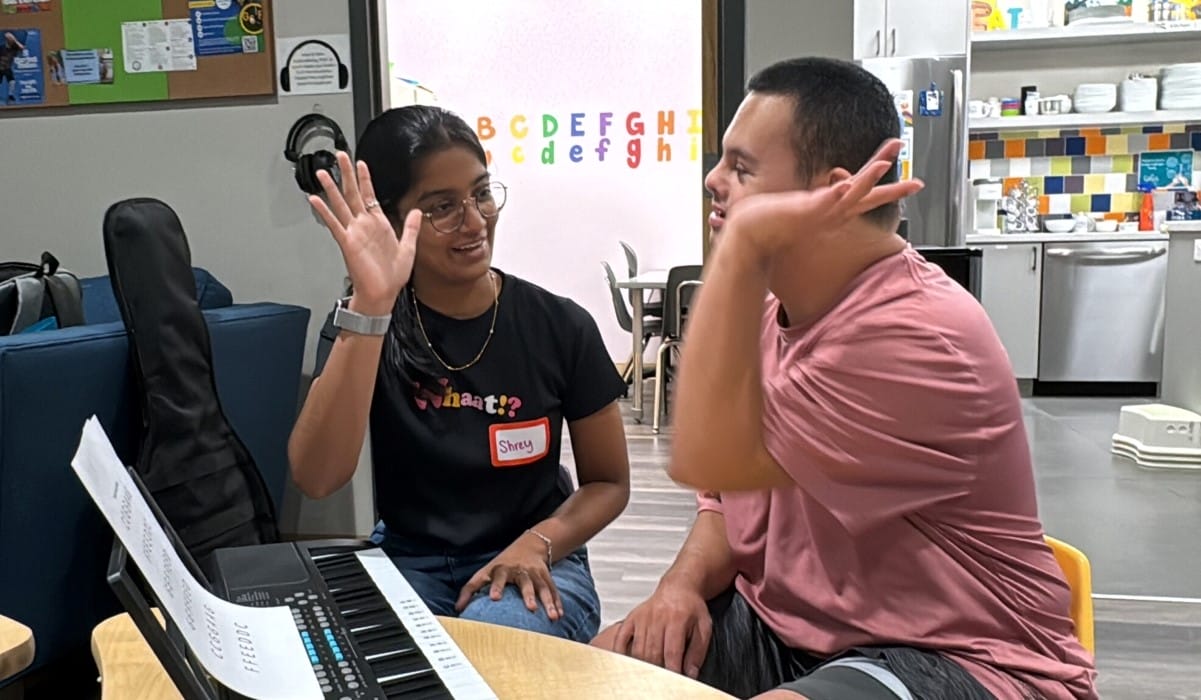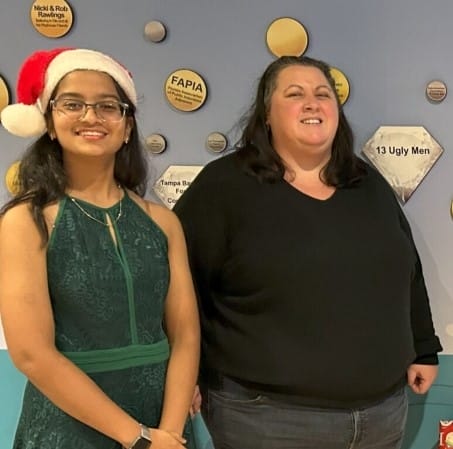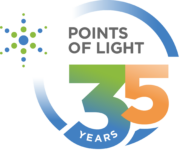Sharing the Many Benefits of Music

Meet Daily Point of Light Award honoree Shreyashi Bodaka. Read her story, and nominate an outstanding volunteer or family as a Daily Point of Light.
Shreyashi Bodaka, 17, has two main passions: science and music. She’s interested in computational biophysics—modeling biological systems—and genomics, and is looking to earn an MD-PhD to work with neurodiverse patients like her younger sister. She currently does research through multiple internships. Shreyashi also plays piano both professionally and recreationally. Her work encompasses solo and accompanist performances, ensembles, her school orchestra, competitions and fundraisers.
It’s these two interests, combined with her desire to enrich the life of her sister, that led her to create The Healing Harmony. Through this nonprofit, Shreyashi teaches students, but she also trains others to teach music to students with learning differences via a method she created through research and working with her sister. They use music therapy and applied behavior analysis (ABA) based methodology to accomplish both musical and non-musical goals. Her goal is to make music accessible by sharing an adaptive teaching methodology that can address the way each student learns.
Shreyashi has helped train hundreds of music teachers and 35 volunteers, organized over 500 volunteer hours and donated $25,000-worth of instruments to schools that work with the neurodiverse population, including a grand piano to a school that focuses on children with autism.
What inspired you to get started with this initiative?
My sister is homeschooled. For her, it doesn’t really make sense to focus on academic goals. We have ABA therapists for her, which is the most common type of therapy. Music has been a part of my life for forever, and I’ve always wanted to share that with her. When COVID hit, I had a lot more time. I started to teach her piano but realized that the way I was taught wasn’t going to work, so I tried to use ABA techniques. It’s a way of breaking down tasks into their simplest components and then teaching each of those, step-by-step. It ended up being particularly effective when combined with color-coding, a trick I learned with my research.

One of our family friends with neurodivergent children asked me to teach their kid as well, because she was interested in piano. The primary issue that sparked The Healing Harmony was that no one can really find lessons for these kids, because most people aren’t prepared to adapt to their needs. According to a report I found called “Reshape Music” by Youth Music, a majority of neurodivergent learners can’t find music teachers who can adapt to their needs, even though 80% of them find music enjoyable. Because of this, only 7% of them are regularly making music.
My method was effective with this other child, so I showed it to several ABA therapists and piano teachers who thought it looked solid. Then, I started expanding with The Healing Harmony.
Tell us about your volunteer role with The Healing Harmony.
Originally, this was all me, but that wasn’t a sustainable model. So, I started putting out calls for volunteers. Our major initiative is running sessions with music activities oriented towards neurodivergent kids. We want to get them moving—for example with maracas—and excited about music. We’ll teach them basic songs on the piano with labels on the keys and color-coding. We’ll also encourage them to engage with each other. We partner with several major organizations—Ronald McDonald House, GiGi’s Playhouse, Children’s Cancer Center—and have reached over 1,100 kids so far.
I used to create and implement lessons, but now I focus on the former so that I can pass them on to volunteers and other teachers through trainings. We’ve now established a few positions, including an outreach manager who reaches out to piano teachers across the country and organizations we might be able to either donate to or run sessions at. I oversee that and offer teachers one-on-ones to walk through the method and answer questions on how to apply it.
I also work on fundraisers, and I still perform. This December will be my fifth year performing at a sensory-friendly Santa-meeting group. I volunteer at some sessions, but at this point, there are too many to go to all of them. It’s also a lot of coordination and administrative tasks for directing donations.
What are your long-term plans or goals for the organization?
We’re looking to expand, fundraise more and get a system in place to ensure this method is eventually standard for piano teachers to learn. Our job won’t be done until it’s as easy to find a music teacher for a neurodivergent child as it is for a neurotypical child.
What’s been the most rewarding part of your work?
It’s seeing kids go from shy or hesitant to opening up. I vividly remember working with one girl, because she was so vibrant by the end of the session. Someone once asked me if I thought I’m being a voice for the neurodivergent community. To me, it’s the opposite. I’m giving them a voice through music, and that’s the most rewarding part.

What have you learned through your experiences as a volunteer?
Every neurodivergent learner is different, just as every neurotypical learner is different. I’m most accustomed to working with the challenges my sister has, but through my sessions, I’ve become even more adaptable. There are preconceptions that neurodivergent people are very different, but they’re really not. They have the same basic needs. They want to have fun and connect with people, even if it’s in a different way. They still want to be respected. They still want to enjoy things like music.
Why is it important for others to get involved with causes they care about?
Your own effort is never too small to make an impact. We always think these are such global issues that one person would never be able to do anything about, but if hundreds of individuals participate, now it’s no longer small. You might end up with something like The Healing Harmony, where you’ve made a really big impact on people that you deeply care about, like my sister.
Do you want to make a difference in your community like Shreyashi? Find local volunteer opportunities.
